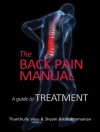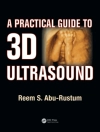Soldiers deployed during the 1991 Persian Gulf War were exposed to high concentrations of particulate matter (PM) and other airborne pollutants. Their exposures were largely the result of daily windblown dust, dust storms, and smoke from oil fires. On returning from deployment, many veterans complained of persistent respiratory symptoms. With the renewed activity in the Middle East over the last few years, deployed military personnel are again exposed to dust storms and daily windblown dust in addition to other types of PM, such as diesel exhaust and particles from open-pit burning. On the basis of the high concentrations observed and concerns about the potential health effects, DOD designed and implemented a study to characterize and quantify the PM in the ambient environment at 15 sites in the Middle East. The endeavor is known as the DOD Enhanced Particulate Matter Surveillance Program (EPMSP). The U.S. Army asked the National Research Council to review the EPMSP report. In response, the present evaluation considers the potential acute and chronic health implications on the basis of information presented in the report. It also considers epidemiologic and health-surveillance data collected by the USACHPPM, to assess potential health implications for deployed personnel, and recommends methods for reducing or characterizing health risks.
Board on Environmental Studies and Toxicology & Committee for Review of the DOD’s Enhanced Particulate Matter Surveillance Program Report
Review of the Department of Defense Enhanced Particulate Matter Surveillance Program Report [PDF ebook]
Review of the Department of Defense Enhanced Particulate Matter Surveillance Program Report [PDF ebook]
Beli ebook ini dan dapatkan 1 lagi GRATIS!
Bahasa Inggris ● Format PDF ● Halaman 106 ● ISBN 9780309154147 ● Penerbit National Academies Press ● Diterbitkan 2010 ● Diunduh 3 kali ● Mata uang EUR ● ID 7149449 ● Perlindungan salinan Adobe DRM
Membutuhkan pembaca ebook yang mampu DRM












